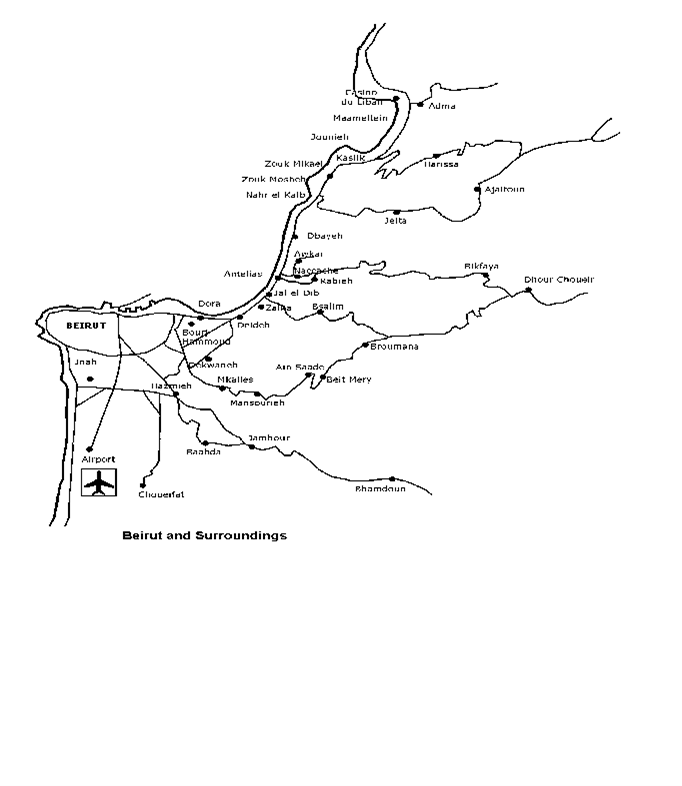Location
Situated along the eastern shores of the Mediterranean Sea, Lebanon is a country of just 10,452km2. All regions are within easy reach by car from the capital Beirut.; In fact, you shouldn’t need more than a four-hour drive, to get to the most far-flung places.; The Anti-Lebanon mountain range is almost equal in height and length to the western Lebanon mountain range.; They form a natural border with the neighboring Syria to the east.
Beirut and the major cities of Tripoli, Sidon and Tyre are all situated on the narrow coastal plain, only 6.5km at the widest point.; In land are two parallel mountain ridges running north-south.; The rugged and rocky landscape of Mount Lebanon rises steeply from the coastal plain, with the highest peaks reaching 3,360m.
The capital, Beirut, was reborn in 1990 after extensive fighting during the war years.; The city was completely rebuilt and restored and reveals an astonishing mix of modern constructions as well as constructions and artefacts dating from as far back as the Canaanite period 3000 B.C.
The coastal areas in Lebanon enjoy a Mediterranean climate with hot, humid summers and mild, rainy winters.; Average temperatures in Beirut range from 29oC to 32oC (84oF to 90 o F) in summer and 16oC to 19oC (61oF to 66oF) in winter.; The mountain regions, with more temperate and less humid weather, attract many residents in the summer months seeking refuge from the sticky conditions in the city.; During July and August in Beirut the humidity can reach high levels and don’t be surprised if you feel like keeping the air conditioning on day and night during these months. In winter, temperatures can drop below zero at higher altitudes and many mountain peaks remain snow-covered throughout much of the year.; Winters in Beirut are certainly mild by northern European standards.; There are usually very few days cold enough to warrant a heavy overcoat but there is some rain from October to April, often falling in sporadic and rather dramatic bursts.; Streets tend to become flooded due to less-than-efficient drainage systems, so expect some traffic snarls during and after a rainy spell.
About Byblos, Lebanon
Byblos is thought by some to be the most ancient city in the world, dating back more than seven thousand years. Presumably founded by Neolithic men, it became not only a port open to the high seas but also an urban community older than Paris, Rome or Athens. Byblos has always been a city in construction, its port coexisting with a great center of religious life. In 332 B.C., Byblos was the first town in the Levant to rally to Alexander the Great during the conflict between Macedonia and ancient Egypt. The town came under the obedience of Rome in 63 B.C. In 330 A.D., Byblos became part of the orbit of Byzantine culture. After the Roman Empire split between East and West, it became the seat of a Christian bishopric, and the number of its inhabitants increased considerably.The Muslim conquest in 636 A.D. marked the beginning of the Umayyad and Abbasid eras, which lasted until 1098 but left very few traces on the cityscape. The caliph Moawiya installed a Persian colony in the town and attached Byblos to the province of Damascus. The port was closed, and Muslim society began to adapt to Byzantine customs. Trade with Europe was considerably reduced and the town declined, making it vulnerable to Crusader invasions. A long period of torpor followed and lasted until the dawn of the Lebanese Republic. In 1984, Byblos was declared a UNESCO world heritage site. Nowadays, the city is a key tourist hub bursting with life and activities. Each summer, the Byblos municipality organizes a major festival attracting thousands of visitors and top international performers.
